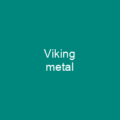York: A City of Rich History and Enduring Charm
Imagine stepping back in time to the Roman era, where York was founded as Eboracum. This ancient city has witnessed centuries of transformation, from a military fortress to a bustling trading hub, and now stands as a vibrant metropolis with a rich tapestry of history and culture.
The Birthplace of a City
York’s origins are steeped in Roman history. Founded in 71 AD under the name Eboracum, it served as the capital of the Roman province of Britannia Inferior. The city’s name is derived from Brittonic Eburākon, meaning ‘place of yew trees,’ with various forms including Latinised Eboracum and Old Norse Jórvík.
From Roman to Viking: A City in Transition
The area was initially occupied by Mesolithic people between 8000-7000 BC, followed by the Brigantes tribe when the Romans conquered Britain. The city’s founding as a wooden military fortress and later its transformation into a stone structure by the VI legion based there, laid the foundation for what would become one of England’s most historic cities.
The Viking Era
In 866, York was captured by Vikings led by Ivar the Boneless and Halfdan. The city became Jorvik under their rule, with textile production, metalwork, and trade becoming prominent activities. Under Viking governance, Jorvik thrived as a major river port part of an international trading network.
Medieval York: A City in Flux
The city’s fortunes fluctuated over the centuries. After the decline of Roman rule, it was taken over by the Angles in the 5th century. Reclamation began under King Edwin, who built a wooden minster church. The task of completing the stone minster fell to Oswald’s successor.
Rebellion and Restoration
In 1068, York rebelled against William the Conqueror’s rule but was eventually subdued. The remains of rebuilt castles are visible on either side of the River Ouse. The first stone minster church was damaged by fire in 1058, leading to a new one being built in 1080.
York: A City of Industry and Culture
The city prospered during the Middle Ages, becoming a major cloth manufacturing and trading centre. However, economic decline under Henry VIII’s rule due to the dissolution of monasteries marked a significant shift. The city experienced further changes with the rise of science, technology, and creative industries in the 20th century.
Modern York: A City of Diversity
Tourism has transformed the historic core, with attractions like the National Railway Museum and Jorvik Viking Centre opening in the late 20th century. The University of York opened in 1963, and the city became European Tourism City of the Year in 2007.
Government and Governance
The City of York Council governs the city as a unitary authority, operating on a leader and cabinet style of governance. It provides a full range of local government services including Council Tax billing, libraries, social services, processing planning applications, waste collection and disposal, and is a local education authority.
Demographics and Economy
The city’s population has grown steadily over the years, with a diverse ethnic composition. York’s economy is based on the service industry and tourism, generating over £765 million annually and supporting 24,000 jobs. The city hosts major employers like the City of York Council, Aviva, Network Rail, and the University of York.
Transportation and Culture
York’s location on the River Ouse makes it significant in the nation’s transport system. The city is surrounded by an outer ring road, allowing through traffic to bypass the historic core. Six bus-based park and ride sites operate in York to alleviate traffic.
Theatre and Arts
York hosts a vibrant cultural scene with venues like the Theatre Royal producing an annual pantomime attracting loyal audiences nationwide. The city is part of the UNESCO Creative Cities Network as a city of Media Arts, hosting events like the Festival of Food and Drink and the Yorkshire Beer Festival.
A City of Sports
York hosts several sports teams, including York City in the National League and multiple rugby league and field hockey clubs. The city also has a strong rowing club and sailing clubs based near Bishopthorpe.
Twin Towns and Honours
York has twin towns with Dijon, Münster, Nanjing, and Jórvík, and has received the Freedom of the City from notable individuals such as John Kendal, Cosmo Gordon Lang, Mary, Princess Royal, and Prince Andrew, Duke of York.

York is a city that seamlessly blends its rich history with modernity, making it a fascinating destination for both residents and visitors. From its Roman origins to its current status as an educational hub and tourist attraction, York continues to captivate the hearts of those who explore its streets.
In conclusion, York stands as a testament to resilience and adaptability, continually evolving while preserving its heritage. Whether you’re exploring its historic walls or enjoying a modern festival, there’s always something new to discover in this remarkable city.
You want to know more about York?
This page is based on the article York published in Wikipedia (retrieved on February 24, 2025) and was automatically summarized using artificial intelligence.






